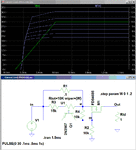electrophile
Member level 2
Got it crutschow! Thanks for that. I had never thought of it.
FvM - How do I calculate the value of the pull up? Should it be the standard pullups of around 47K? Also the Z-diode should be less than the Vgs rated in the FET's datasheet (which in this particular case is +/- 20V)? Also, if I use the Z-diode, I can eliminate R12 altogether. Am I right?
FvM - How do I calculate the value of the pull up? Should it be the standard pullups of around 47K? Also the Z-diode should be less than the Vgs rated in the FET's datasheet (which in this particular case is +/- 20V)? Also, if I use the Z-diode, I can eliminate R12 altogether. Am I right?
